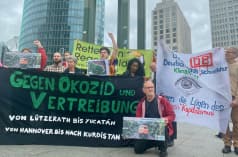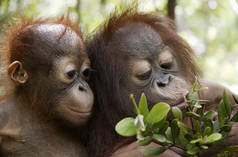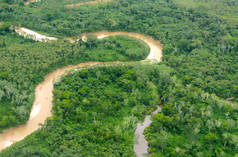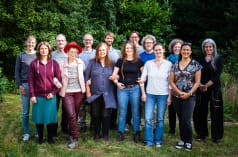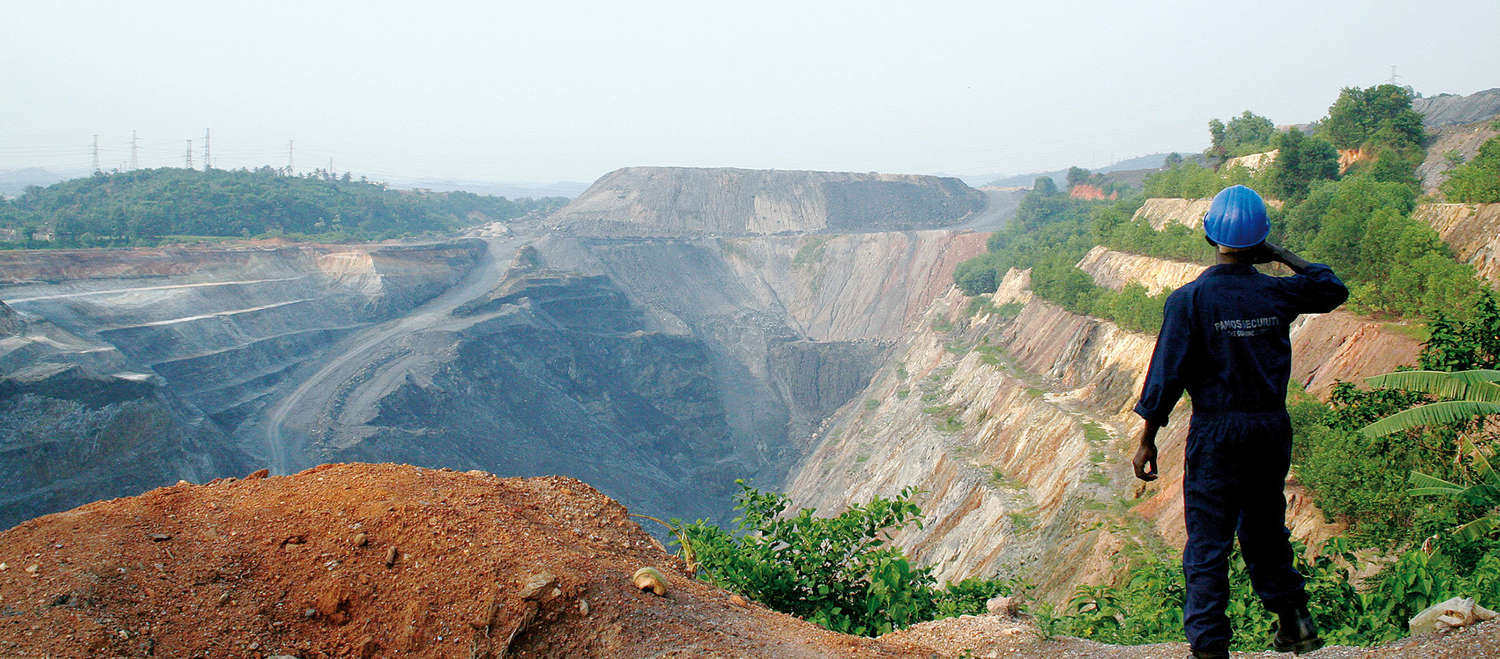Questions and answers
What does your heirloom jewelry have in common with the digital device you are using to read this page? They both contain gold. And in the quest for this precious metal, thousands of people are displaced from their land – often violently – time and again. The miners are exposed to toxins and numerous deadly hazards. Many of them are children.
The environment also suffers tremendously: vast mines turn entire regions into lunar landscapes. Groundwater, rivers and soils are contaminated with highly toxic chemicals such as mercury and cyanide.
What does gold have to do with the rainforest?
These days, gold miners are pressing ahead into the world’s most remote regions to meet the growing demand for the precious metal. With the current high price of gold, processing rock with a gold content of just one gram per ton is a profitable undertaking. A major share is mined in South Africa, Australia, the United States, Russia and China, but the trend is moving toward other countries. Numerous forests in Venezuela, Ecuador, Guatemala, Peru, Indonesia, Ghana and many other tropical countries are therefore threatened by gold mining. The Grasberg mine in Indonesia is currently the largest gold mine and also the third-largest copper mine in the world. The mining areas are often located in regions that are inhabited and used by indigenous peoples. Over 70 states have already amended their mining laws to attract foreign companies. From Ghana to the Philippines, taxes and duties are being reduced and environmental regulations suspended.
How is gold mined?
Today, gold is generally mined in huge open pits. A gold mine is an open-air chemical plant: First, the rock is blasted and crushed. In open leaching, it is then heaped in tall mounds on plastic sheets and drizzled with a cyanide solution for weeks. The solution releases the tiny traces of gold from the rock. Often, they only amount to one to two grams per ton. A correspondingly large amount of cyanide is required: an estimated 182,000 tons are used annually in gold mines worldwide.
Some mines perform the leaching process in closed tanks. This is safer than the open process, in which a highly toxic liquid is stored in uncovered basins with restraining walls that can break. Even so, closed leaching results in massive amounts of highly toxic slag which is stored in reservoirs or, in countries like Indonesia, is simply dumped into rivers and oceans. Either way, the destruction of the landscape and environment is the same. Modern gold mining violates human rights and leaves devastated landscapes, lasting environmental damage and social problems in its wake.
It also creates a ticking time bomb: When exposed to the air, rock treated with cyanide forms acids that eat their way through the subsoil over time, ultimately polluting the groundwater. Another method is the extraction of gold from river sand, usually using mercury to form an amalgam with the gold dust. The amalgam is then heated to vaporize the mercury and obtain the pure gold. The unfiltered toxic fumes escape into the air and into rivers. Heavy metals such as arsenic, lead, cadmium and mercury are also released. Every year, an estimated 100 tons of mercury are dumped into the Amazon alone.
Is it true that people become ill from the effects of gold mining?
Modern gold mining is a disaster for humans and the environment, far removed from the romantic historical image of panning prospectors. The livelihoods of many people are destroyed by gold mining. Environmental pollution and the poisoning of people are not the exception, but the rule. Toxic fumes are inhaled by humans and animals, while pollutants are released into lakes, rivers and oceans, eventually making their way into the food chain. Highly toxic chemicals, especially cyanide, are used to treat ore in open-pit mining. Cyanides interfere with the body’s oxygen transport – even the smallest doses can be fatal. Mercury, a heavy metal, accumulates in the body and primarily damages the central nervous system.
Do children also have to work in gold mines?
Yes. In Peru alone, over 50,000 children work in gold mines. Many of them are only six years old. About 2,000 work in gold mines in Ecuador, and young children are also active in African mines. They carry and break rocks, dig narrow tunnels, and prepare blasting operations. The air in which they work is often hot and muggy, with toxic fumes that damage their organs and can lead to mental disabilities. Fatal accidents, in which blasting operations cause tunnels to collapse on children, have occurred time and again.
Why do we actually need gold?
The world is currently experiencing a new gold rush. This is partly due to the sharp rise in its price, which topped 1,000 US dollars an ounce for the first time in March 2008. The price has thus nearly quadrupled over the course of six years. In 2003, about 2,600 tons of gold were mined worldwide, about one hundred times more than in the 19th century. That same year, around 78 percent was used by the jewellery industry according to the World Gold Council. The quantity used for chains and rings has multiplied over the past 30 years. Gold is also used in dental technology and the electronics industry: PCs each contain several grams of gold.
Who is responsible for gold mining?
The industry is dominated by a handful of transnational corporations in South Africa, Canada, the United States and Australia. Many states have opened up to international mining companies – mostly under pressure from the World Bank and International Monetary Fund (IMF). The majority of the victims are indigenous peoples, small farmers and fishermen. They are generally not consulted, and in many cases are not even informed about planned mines. Their shrines and holy places are given equally little consideration. Companies often resort to threats, intimidation, false promises and lies to obtain the consent of those affected. When the big companies move in, the locals are evicted from their land, often with brute force. In Ghana, around 10,000 people suffered this fate at the hands of a mining company.
Doesn’t gold mining provide poor countries with a source of foreign currency and jobs?
Mining companies improve the labor market and export sector only superficially. Today’s gold mines are usually measured in square kilometers, yet they only employ very few people. While the mines are often highly profitable, the local populations rarely benefit, nor do the host countries. The miners often receive low wages and work under the worst imaginable conditions. In South Africa, roughly one miner is killed and twelve serious accidents occur for every ton of gold mined.
A study in Venezuela showed that in four years, the state of Bolivar had earned a mere two million dollars from its gold mines. The trend is moving toward still lower earnings for the host countries and increased profits for mining companies. With taxes decreasing steadily, the companies are raking in “scandalous profits”, as a Venezuelan environmentalist put it. If we also consider the social and environmental costs, the bottom line for poor gold countries is a huge loss.
For people in the affected locations, gold mining often means the pollution of vital resources such as water and soil by toxic ore-processing chemicals and production residues, social problems caused by land and resource conflicts, and disregard of fundamental rights by the state and mining companies. While it would seem appropriate to improve safety in industrial gold mining and give people better qualifications, the ruthlessness of the mining companies is the key to their big profits. By their own admission, gold mining would no longer be viable for many companies if they had to pay for the damage they cause. Mining projects also threaten agriculture and other functioning economic structures without offering a long-term alternative, and destroy possible perspectives for the future such as ecotourism.
What does my wedding ring have to do with destroying the environment?
Gold buyers should be aware of the true price of their necklace or the bracelet: millions of tons of broken-up earth, devastated landscapes, billions of liters of tainted river water, and people living in poverty and poor health or being evicted from their land. The true impact of gold’s costly luster can be seen in the amount of mostly toxic waste, soil and rock needed to produce a single wedding ring: 20 tons!
Is “fair jewellery” an environmentally and socially responsible alternative?
It would appear to be, because vendors of fair jewellery work exclusively with distributors and organizations that promise high social and environmental standards and can document their compliance transparently. These include Eco Andina from Argentina and Oro Verde from Colombia. These organizations do not use toxic chemicals for gold mining. Instead, the gold is washed out of river sediments. 70 to 80 percent of the gold can be recovered using this technique. Thanks to the lack of chemicals, the health of workers is not affected, and the environment is protected. Child labor is prohibited. In Germany, Fair Trade Minerals & Gems e.V." monitors the establishment and ongoing operations of such Fair Trade projects.
Is recycled gold a good solution?
Gold is relatively easy to recover from old jewellery and dental work. Special gold refineries handle the purification work. Goldsmiths can smelt and adjust the composition of various gold alloys themselves. Jewellery which has become unfashionable or has no personal meaning to its owners can be reworked, thus turning old gold into new jewellery.
Yet old jewellery is not the only source of recyclable gold. The precious metal is also hidden in many modern electronic products. For example, 40 cellphones contain as much gold as a ton of ore.
Prolonging the useful life of electronic devices through recommerce, carefully considering whether a new one is truly necessary, and taking devices that no longer work to a recycling center is therefore a huge win for humans and the environment.
What does Rainforest Rescue do for people and animals suffering under gold mining?
In many countries, people who have been driven from their land by the greed for gold are increasingly resisting the destruction of the environment. Rainforest Rescue supports environmental groups, gold victims in Guatemala, Ghana and Ecuador, and campaigns against “dirty gold”. We provide financial assistance, organize protest-mail campaigns, and publicize information about the impact of gold mining and what individuals can do about the related problems. Resistance is effective. In Chile, for example, a huge mining project was prohibited by the country’s supreme court because the responsible company had violated the rights of indigenous peoples.
What can I do personally?
- Recycle old jewellery and other gold products or have them reworked.
- Do not buy mass-produced gold jewellery.
- Talk to your jeweler about the environmental issues associated with gold mining and send a report on your conversation to Rainforest Rescue. Point out the option of using certified gold that has been produced according to higher environmental and social standards than “dirty” gold.
- Contrast the pure image of gold with its ugly reality, for example in letters to the editor and other contributions to newspapers and magazines.
- Do not give gifts of gold for Christmas or other festive occasions.
- Use electronic devices like your cellphone as long as possible and then recycle them.
- Support the efforts of development organizations in lobbying against further World Bank loans for gold mines. Talk to your elected representatives about the problem and encourage them to take action.
- Donate to Rainforest Rescue so that we can step up our support for gold mining victims in the rainforest countries. For your donation, we would be pleased to provide you with a rainforest certificate that would also make an attractive present.

